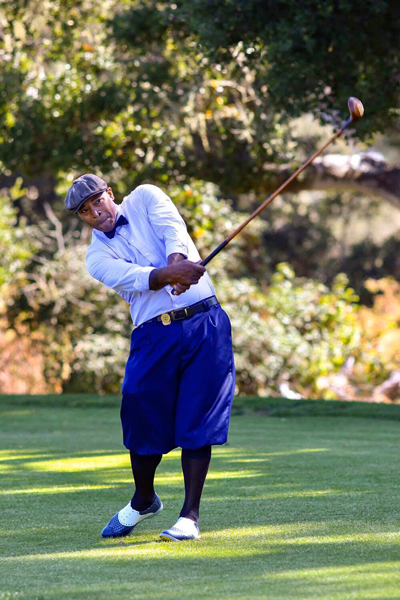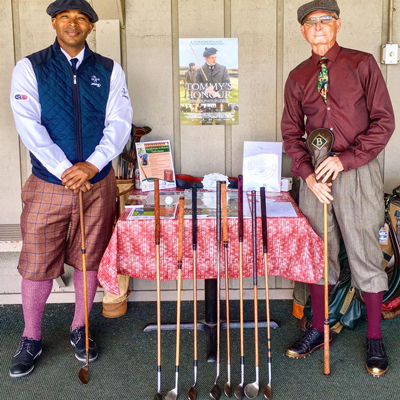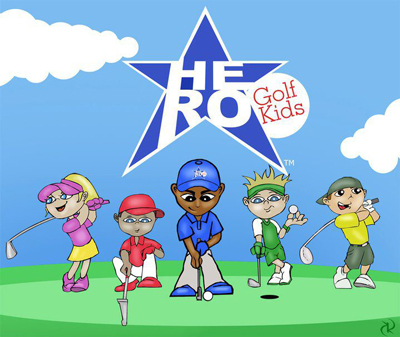Durel Billy fell in love with the game and with its history, and found numerous ways to give back to it, even though it did not always give back to him
by Paul Ramsdell
A lot of us fell in love with golf from the very beginning – but probably not as much as Durel Billy did 20 years ago.

“My first round of golf was a Sunday at PLU. I’ll never forget it, obviously,” said the 50-year-old from Puyallup, Wash., about the Pacific Lutheran University golf course that has since been paved over.
“I hit a 3-iron off that first tee, which was a MacGregor 3-iron, and I was hooked from the beginning. I mean, literally, that’s all it took,” he said.
“That’s when it started, and the next day I was looking for my own clubs, shoes, pull cart, I was hooked up. A week later I had everything.”
And in the 20 years since, probably none of us have spent as much time and energy, despite numerous hurdles along the way, worshipping the game of golf and growing it as Durel Billy.
Years, dates and timelines can be important for someone who has had 23 different addresses. Billy was raised in an Air Force family, born in New Orleans, but growing up mostly in Mountain Home, Idaho. He even lived for a time in Amsterdam.
The golf life, though, has all been in the Puget Sound region, and from that Sunday outing 20 years ago when his basketball buddies were planning to make fun of him as he attempted a new sport, it has evolved to where he’s a member of the Board of Directors of Washington Golf, overseeing all of amateur golf in the state.
On that 20-year timeline, 2013 stands out for the man who has turned himself into a golf history buff, basically because of what happened 100 years earlier.
“1913 was a big inspirational year to me,” Billy said. “That’s kind of when golf took off in America, that was Francis Ouimet winning the U.S. Open.”
In his research of that 1913 U.S. Open, Billy became familiar with John Shippen, considered the first American-born golf professional. Shippen first played in the U.S. Open in 1896 and placed as high as fifth in the 1902 U.S. Open.
“John Shippen happened to be Black, happened to be African-American, and he played in that U.S. Open,” Billy said. “In 1913, he was in the field. That was a big thing for me, as a Black person.
“And, obviously, 1913 was the year Harry Vardon and Ted Ray were making their tour across America. And they played Tacoma Country & Golf Club, so that was a really big deal.”
A hundred years later, in 2013, in a kind of a tip of the cap, if you will, Billy got a group of friends involved in his AP National Golf Club to honor the history of golf.

“Toward the end of the year I wanted to do a fun tournament and bring persimmon woods into play and blade irons. It was just going to be a fun tournament to bring everyone together and just have a good time.”
It eventually evolved into a series of hickory club events, up to eight a year he was organizing, some at The Home Course and some at Meadow Park in Tacoma.
However, it wasn’t the old-style clubs that inspired him.
“I guess you could say I’m kind of a self-proclaimed golf snob,” Billy says. “I’m not a big fan of jeans and T-shirts on the golf course. It would be really cool if guys came out in a vest and a tie and played golf.”
It’s a look another Puyallup resident, PGA Tour professional Ryan Moore, displayed for all the world to see for a couple of years.
“It was a beautiful look,” Billy said. “It was awesome.”
So, the first big event for AP National was more of a dress-up event, with a hickory division, a Hogan division and a Golden Bear division.
“Everybody had to dress up,” Billy said.
His life in golf hasn’t been all fun and games, however. As with Shippen a hundred years earlier, there have been hurdles. In the 1896 U.S. Open at Shinnecock Hills, most of the other competitors went to the USGA and said they would refuse to play if Shippen and another player, a member of the Shinnecock Indian Nation, were allowed to play. The USGA said, fine, if that’s the case, it will just be a two-person U.S. Open, just Shippen and the other.
For Billy, once his hickory events became popular, other groups of hickory players took notice. But instead of companionship, unresolved conflicts rose to the surface.

At one point, Billy developed a junior golf series as well as a commercial endeavor with junior cartoon characters such as Sandy Par and Billy Bogey that were popular on T-shirts and one day might make their way into a kids’ instructional book.
The T-shirts were popular in pro shops and retail outlets, but one regional retail chain quickly dropped its enthusiasm as soon as it discovered that a Black man wasn’t just the salesperson, but the owner and creator of the product.
“There were times when I was told there were no tee times, or ‘we can’t get you out,’ or being followed in the pro shop,” Billy said.
“It wasn’t going to stop me. This was my thing, and I loved it, and I felt like it was for everyone.”
It’s not just the game Durel Billy fell in love with, but also its history, traditions and even its clothes.
“My love for it….” he added, his voice trailing off. “That is what I want other people to experience.”
(This article previously appeared in Pacific Northwest Golfer magazine, published by the PNGA.)
Paul Ramsdell has been a career-long journalist working at various times with newspapers, magazines and ESPN.com. He currently is the executive director of the Northwest Turfgrass Association.

